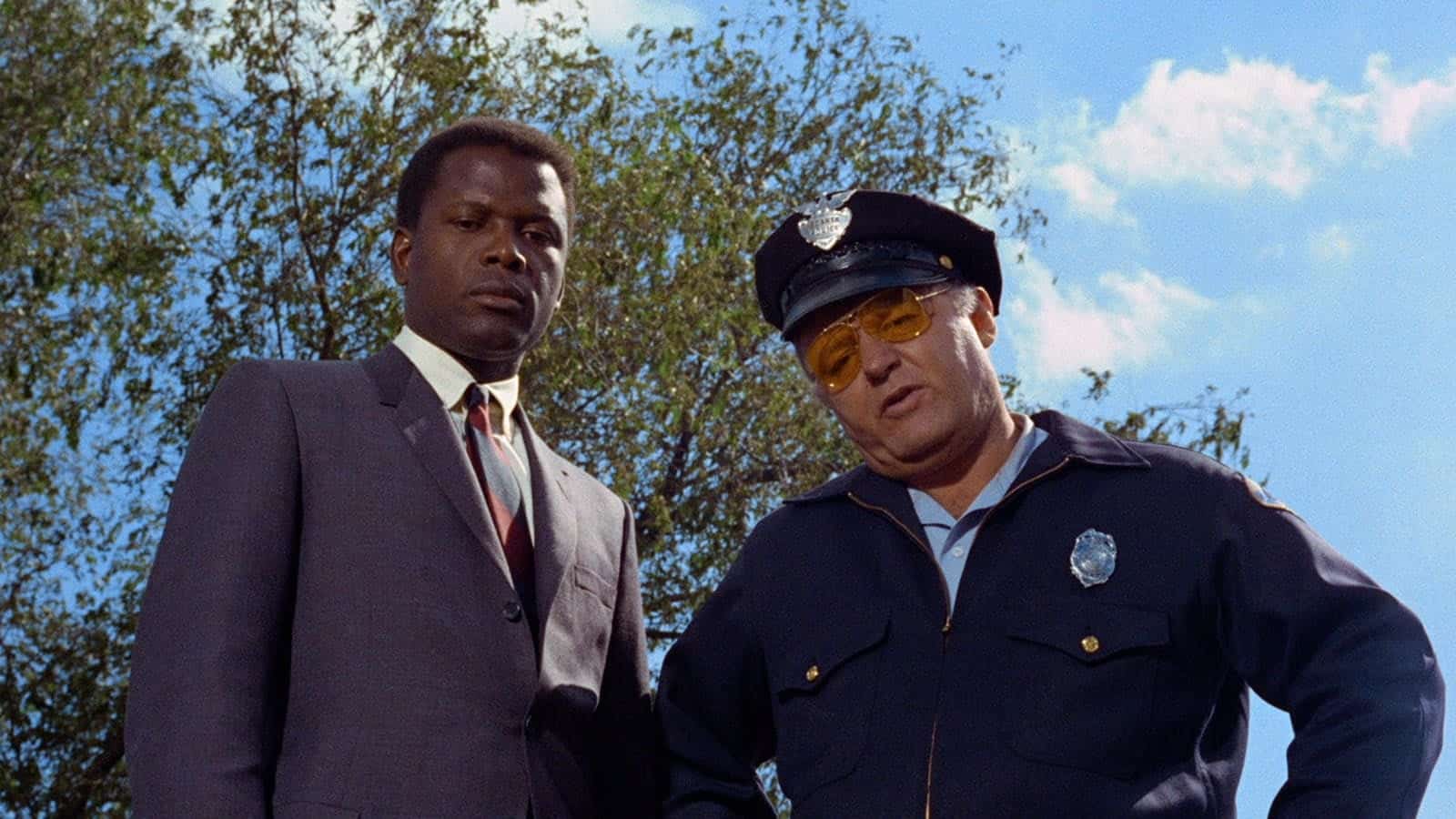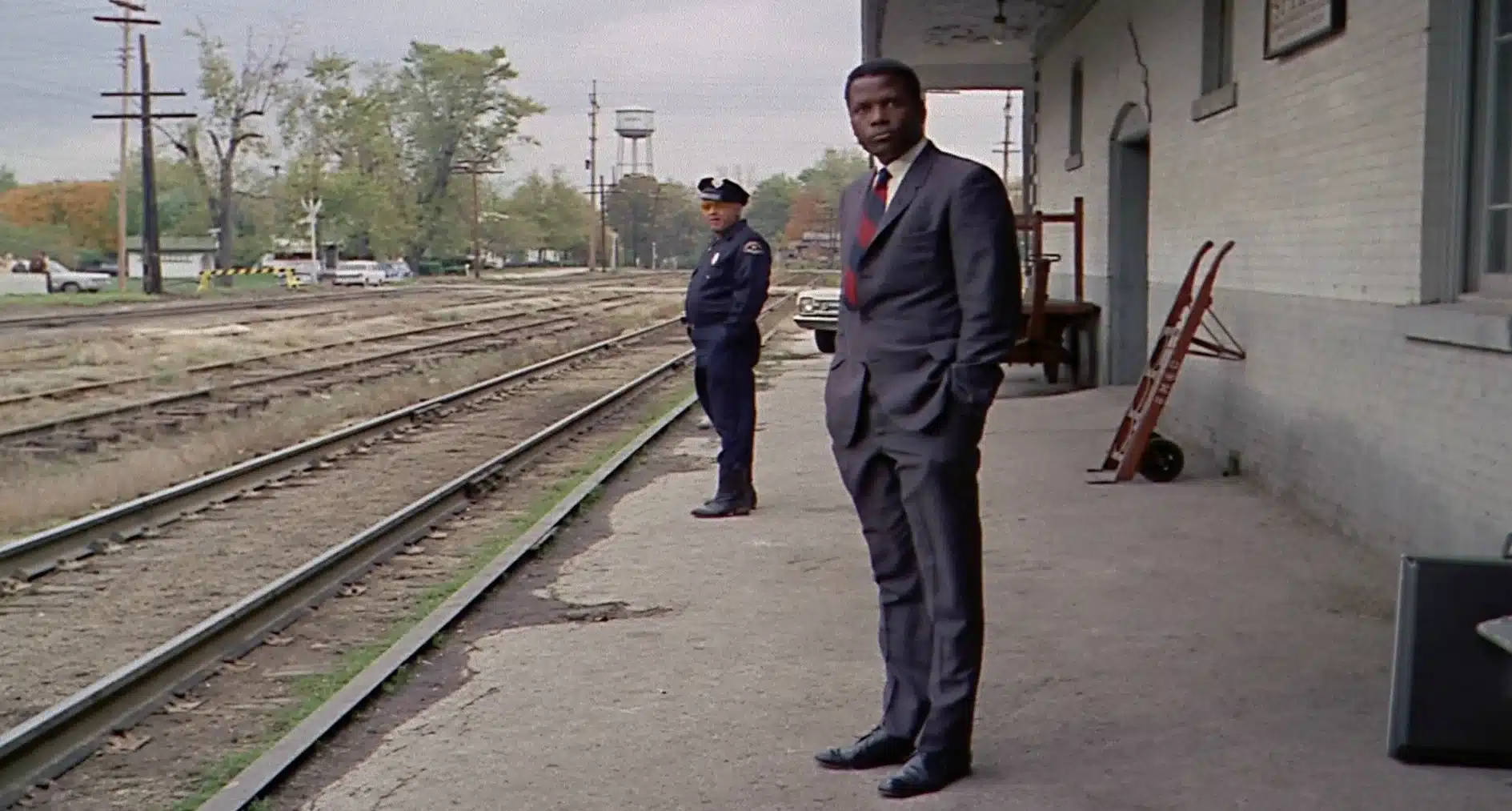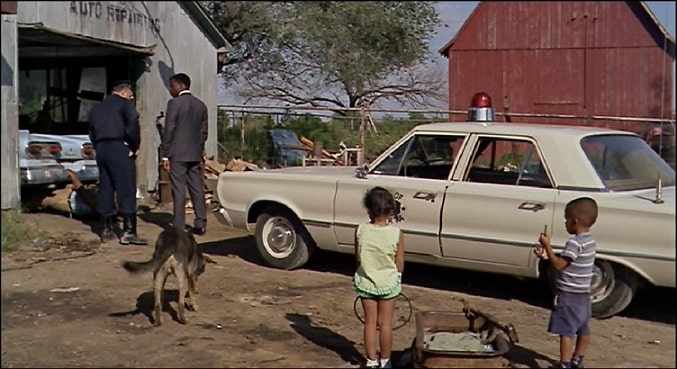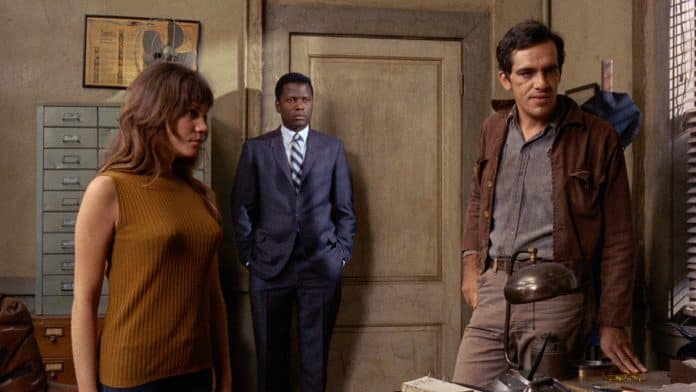Where Was In The Heat of the Night (1967) Filmed – Norman Jewison directed “In the Heat of the Night“, a 1967 American mystery drama film. It depicts the narrative of Virgil Tibbs, a Black police investigator from Philadelphia who becomes embroiled in a murder investigation in a tiny town in Mississippi. It is based on John Ball’s 1965 novel of the same name. Walter Mirisch produced the film, which stars Sidney Poitier and Rod Steiger. Stirling Silliphant wrote the screenplay for the movie.
The film was nominated for seven Oscars at the 40th Academy Awards, winning five of them, including Best Picture and Best Actor for Steiger. The remark “They call me Mister Tibbs!” was ranked 16th on the American Cinema Institute’s list of best film quotes, 100 Years…100 Movie Quotes. The picture is also included in AFI’s 100 Years…100 Movies, a selection of the top 100 films produced in the United States. In addition, the Library of Congress chose the picture for preservation in the United States National Film Registry in 2002 because it was “culturally, historically, or aesthetically significant.”
Recommended: Where is the House in “Meet Me in St. Louis”? Where was it filmed?

“In the Heat of the Night” (1967) Movie Plot Summary
Phillip Colbert, a wealthy industrialist, relocates to Sparta, Mississippi, to establish a plant. Sam Wood, a police officer, discovers Colbert’s slain body in the street late one night. At the train station, wood apprehends Virgil Tibbs, a black guy with a bulging pocketbook. Gillespie accuses him of murder and robbery, but Tibbs is quickly discovered to be a top homicide inspector from Philadelphia. Tibbs wants to get on the next train out of town, but his supervisor advises him to stay in Sparta and assist with the murder investigation. Even though Gillespie, like many other white Spartans, is prejudiced, he and Tibbs grudgingly agree to collaborate.
When Colbert’s body was discovered, a doctor estimated that he had been deceased for less than an hour. However, Tibbs studies the body and determines that the murder occurred earlier than the doctor suspected, that the attacker was right-handed, and that the victim was murdered somewhere and moved to where Wood discovered his body.
Another suspect, Harvey Oberst, is apprehended by Gillespie, who pleads with his innocence. The cops want to beat him in order to force a confession, but Tibbs reveals that Oberst is left-handed and has witnesses to back up his alibi. Colbert’s widow, frustrated by the ineptness of the local police but pleased by Tibbs, threatens to halt the factory building until Tibbs heads the inquiry, forcing the town’s leading inhabitants to agree with her demand.
Tibbs suspected plantation owner Endicott, a refined racist and one of the town’s most important men, as the murderer. Endicott publicly opposed Colbert’s new factory. Endicott slaps Tibbs in the face when he interrogates him. Endicott sends a team of goons after Tibbs after he slaps him back. Gillespie rescues him and advises him to flee town in order to safeguard himself, but Tibbs is confident that he can solve the case.
Wood agrees to retrace Tibbs’ patrol car route on the night of the murder, and Gillespie joins them. After inquiring why Wood partially deviates from his patrol route, Tibbs discovers that Wood enjoys travelling by the residence of 16-year-old Delores Purdy, with its bright lights and unobscured windows, to watch her undress. Gillespie discovers that the day following the murder, Wood made a large transfer into his bank account. Despite Tibbs’ claims that he is not the murderer, he arrests Wood. Tibbs informs Gillespie that the murder occurred near the proposed facility, clearing Wood, because he couldn’t have driven his and Colbert’s automobiles back into town.
Mr. Purdy, a hostile local, brings Delores to the police station and accuses Wood with statutory rape for getting her pregnant. Purdy is angry that a black man is present during Delores’ interrogation and quickly forms a mob to assault Tibbs when Tibbs insists on being present during her interrogation.
Mama Caleba, a backstreet abortionist, is under pressure from Tibbs to divulge that she is ready to conduct an abortion on Delores. Delores flees when she sees Tibbs when she arrives. Tibbs tracks her down and confronts her armed boyfriend, Ralph, a rural diner cook. Purdy’s gang arrives as well, holding Tibbs at gunpoint.
Purdy is instructed by Tibbs to search Delores’ purse for the money Ralph provided her for an abortion, which he obtained from the murder and robbery of Colbert. When Purdy analyses the purse, he finds Tibbs is correct. Ralph shoots Purdy after he confronts him about his sister’s pregnancy. As Gillespie comes on the scene, Tibbs snatches Ralph’s gun. Ralph is apprehended and confesses to Colbert’s murder. Ralph attacked Colbert at the building site of the new plant after riding with him and begging him for a job, meaning just to knock him unconscious and rob him, but instead accidentally killing him.
Gillespie, who has carried Tibbs’ suitcase, respectfully bids him farewell as he boards a train going for Philadelphia.

“In the Heat of the Night” (1967) Filming Locations
‘In the Heat of the Night’ was shot in Illinois, Tennessee, and California, among other places. Although the film is virtually entirely set in the little Mississippi town of Sparta, most of the sequences were shot in Illinois. In addition, the picture had the fortunate fortune of being the first Hollywood technicolour film to include a black person in a prominent role.
Initially, the cinematic lighting would create too much glare for the dark skin, making it difficult to display the distinguishing features clearly. So Haskell Wexler, one of the most influential cinematographers in cinematic history, joined the project as a cinematographer. At the same time, art director Paul Groesse, who is known for his work on vintage Hollywood films like ‘The Music Man,’ joined the team. So now we’ll take you to the specific places where the film was shot.
Randolph County (Illinois)
Most of the film was shot in Illinois’ Randolph County, particularly in the towns of Sparta and Chester. There appears to be more than one Sparta in the country, and several of the city’s filming locations can still be recognized today. In the film, the city serves as a stand-in for its namesake Mississippi village. Almost every scene from “Sparta” was shot in this city. The production crew also went to Chester, Randolph County’s county seat, to film several sequences. The Harvey Oberst pursuit scene, as well as the external bridge scenes, were shot in Chester.
St. Claire County (Illinois)
The production team traveled outside of Sparta on several occasions, recording sequences in some of the state’s lesser-known towns. For example, Freeburg, a hamlet in St. Claire County, was used to film the opening railroad sequence. Belleville, the county seat of St. Claire County and the seat of the now-defunct Belleville Township, was also visited by the actors and crew.

Tennessee (U.S)
Poitier did not want to go south of the ancient Mason-Dixon line, which divides the Antebellum south from the north, since Jewison had some concerns about Southern authority. Instead, they chose to film some scenes in Tennessee after assessing the logistics. The group traveled to Dyersburg, Tennessee, which is located in Dyer County in the state’s northwest corner. The scenes that unfolded in Endicott’s home were shot on a local property. In addition, scenes of cotton fields were shot in the vicinity. Union City, a peaceful municipality in Obion County, was used for additional filming in the state.
Los Angeles (California)
While the majority of the exterior scenes were shot in Illinois and Tennessee, the crew traveled to California to find a studio. First, they travelled to Los Angeles, the eponymous valley’s famed coastal metropolis. Raleigh Studios Hollywood, a central movie production facility in the studio zone, was the cast and crew’s hunting ground in Hollywood Tinseltown. The large movie studio, located at 5300 Melrose Avenue East in Los Angeles, has facilitated legendary films and TV shows, ranging from ‘Castle‘ to ‘Straight Outta Compton.’













